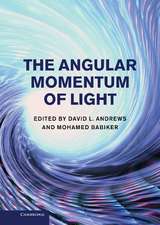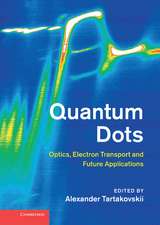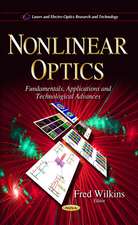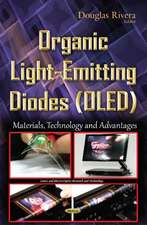Electromagnetic Theory of Gratings: Topics in Current Physics, cartea 22
Editat de R. Petit Contribuţii de L.C. Botten, M. Cadilhac, G.H. Derrick, D. Maystre, R. C. McPhedran, M. Neviere, P. Vincenten Limba Engleză Paperback – 25 dec 2011
Din seria Topics in Current Physics
-
 Preț: 393.13 lei
Preț: 393.13 lei -
 Preț: 401.61 lei
Preț: 401.61 lei - 15%
 Preț: 644.63 lei
Preț: 644.63 lei -
 Preț: 389.31 lei
Preț: 389.31 lei -
 Preț: 391.99 lei
Preț: 391.99 lei - 15%
 Preț: 642.18 lei
Preț: 642.18 lei -
 Preț: 388.90 lei
Preț: 388.90 lei -
 Preț: 382.95 lei
Preț: 382.95 lei -
 Preț: 398.53 lei
Preț: 398.53 lei -
 Preț: 402.98 lei
Preț: 402.98 lei -
 Preț: 387.96 lei
Preț: 387.96 lei -
 Preț: 388.72 lei
Preț: 388.72 lei -
 Preț: 393.13 lei
Preț: 393.13 lei -
 Preț: 397.38 lei
Preț: 397.38 lei -
 Preț: 384.86 lei
Preț: 384.86 lei -
 Preț: 383.33 lei
Preț: 383.33 lei -
 Preț: 385.25 lei
Preț: 385.25 lei -
 Preț: 382.36 lei
Preț: 382.36 lei -
 Preț: 382.36 lei
Preț: 382.36 lei -
 Preț: 382.18 lei
Preț: 382.18 lei -
 Preț: 384.86 lei
Preț: 384.86 lei -
 Preț: 397.59 lei
Preț: 397.59 lei - 15%
 Preț: 639.08 lei
Preț: 639.08 lei -
 Preț: 396.62 lei
Preț: 396.62 lei -
 Preț: 391.40 lei
Preț: 391.40 lei -
 Preț: 382.75 lei
Preț: 382.75 lei -
 Preț: 392.75 lei
Preț: 392.75 lei -
 Preț: 392.60 lei
Preț: 392.60 lei - 15%
 Preț: 643.16 lei
Preț: 643.16 lei -
 Preț: 392.97 lei
Preț: 392.97 lei -
 Preț: 407.01 lei
Preț: 407.01 lei - 15%
 Preț: 638.43 lei
Preț: 638.43 lei -
 Preț: 394.87 lei
Preț: 394.87 lei -
 Preț: 395.09 lei
Preț: 395.09 lei - 15%
 Preț: 641.38 lei
Preț: 641.38 lei -
 Preț: 402.38 lei
Preț: 402.38 lei -
 Preț: 390.63 lei
Preț: 390.63 lei -
 Preț: 387.38 lei
Preț: 387.38 lei -
 Preț: 398.35 lei
Preț: 398.35 lei -
 Preț: 393.35 lei
Preț: 393.35 lei -
 Preț: 384.09 lei
Preț: 384.09 lei - 15%
 Preț: 641.03 lei
Preț: 641.03 lei -
 Preț: 397.01 lei
Preț: 397.01 lei -
 Preț: 395.47 lei
Preț: 395.47 lei - 15%
 Preț: 646.94 lei
Preț: 646.94 lei -
 Preț: 399.67 lei
Preț: 399.67 lei - 15%
 Preț: 642.83 lei
Preț: 642.83 lei - 15%
 Preț: 638.24 lei
Preț: 638.24 lei
Preț: 642.83 lei
Preț vechi: 756.27 lei
-15% Nou
Puncte Express: 964
Preț estimativ în valută:
123.02€ • 133.58$ • 103.34£
123.02€ • 133.58$ • 103.34£
Carte tipărită la comandă
Livrare economică 22 aprilie-06 mai
Preluare comenzi: 021 569.72.76
Specificații
ISBN-13: 9783642815027
ISBN-10: 3642815022
Pagini: 304
Ilustrații: XVI, 286 p.
Dimensiuni: 170 x 244 x 16 mm
Greutate: 0.49 kg
Ediția:Softcover reprint of the original 1st ed. 1980
Editura: Springer Berlin, Heidelberg
Colecția Springer
Seria Topics in Current Physics
Locul publicării:Berlin, Heidelberg, Germany
ISBN-10: 3642815022
Pagini: 304
Ilustrații: XVI, 286 p.
Dimensiuni: 170 x 244 x 16 mm
Greutate: 0.49 kg
Ediția:Softcover reprint of the original 1st ed. 1980
Editura: Springer Berlin, Heidelberg
Colecția Springer
Seria Topics in Current Physics
Locul publicării:Berlin, Heidelberg, Germany
Public țintă
ResearchCuprins
1. A Tutorial Introduction..- 1.1 Preliminaries.- 1.2 The Perfectly Conducting Grating.- 1.3 The Dielectric or Metallic Grating.- 1.4 Miscellaneous.- References.- Appendix A: The Distributions or Generalized Functions.- A.I Preliminaries.- A.2 The Function Space R.- A.3 The Space R1.- A.3.1 Definitions.- A.3.2 Examples of Distributions.- A.4 Derivative of a Distribution.- A.5 Expansion with Respect to the Basis ej(x) =exp [i (nK+k sine) x] = exp (i?n x).- A.5.1 Theorem.- A. 5.2 Proof.- A.5.3 Application to δR.- A.6 Convolution.- A.6.1 Memoranda on the Product of Convolution in D’1.- A.6.2 Convolution in R1.- 2. Some Mathematical Aspects of the Grating Theory.- 2.1 Some Classical Properties of the Helmholtz Equation.- 2.2 The Radiation Condition for the Grating Problem.- 2.3 A Lemma.- 2.4 Uniqueness Theorems.- 2.5 Reciprocity Relations.- 2.6 Foundation of the Yasuura Improved Point-Matching Method.- References.- 3. Integral Methods.- 3.1 Development of the Integral Method.- 3.2 Presentation of the Problem and Intuitive Description of an Integral Approach.- 3.3 Notations, Mathematical Problem and Fundamental Formulae.- 3.4 The Uncoated Perfectly Conducting Grating.- 3.5 The Uncoated Dielectric or Metallic Grating.- 3.6 The Multiprofile Grating.- 3.7 The Grating in Conical Diffraction Mounting.- 3.8 Numerical Application.- References.- 4. Differential Methods.- 4.1 Introductory Remarks.- 4.2 The E,, Case.- 4.3 The H Case.- 4.4 The General Case (Conical Diffraction Case).- 4.5 Stratified Media.- 4.6 Infinitely Conducting Gratings: the Conformai Mapping Method.- References.- 5. The Homogeneous Problem.- 5.1 Historical Summary.- 5.2 Plasmon Anomalies of a Metallic Grating.- 5.3 Anomalies of Dielectric Coated Reflection Gratings Used in TE Polarization.- 5.4Extension of the Theory.- 5.5 Theory of the Grating Coupler.- References.- 6. Experimental Verifications and Applications of the Theory.- 6.1 Experimental Checking of Theoretical Results.- 6.2 Systematic Study of the Efficiency of Perfectly Conducting Gratings.- 6.3 Finite Conductivity Gratings.- 6.4 Some Particular Applications.- Concluding Remarks.- References.- 7. Theory of Crossed Gratings.- 7.1 Overview.- 7.2 The Bigrating Equation and Rayleigh Expansions.- 7.3 Inducti ve Gri ds.- 7.4 Capacitive and Other Grid Geometries.- 7.5 Spatially Separated Grids or Gratings.- 7.6 Finitely Conducting Bigratings.- References.- Additional References with Titles.
















